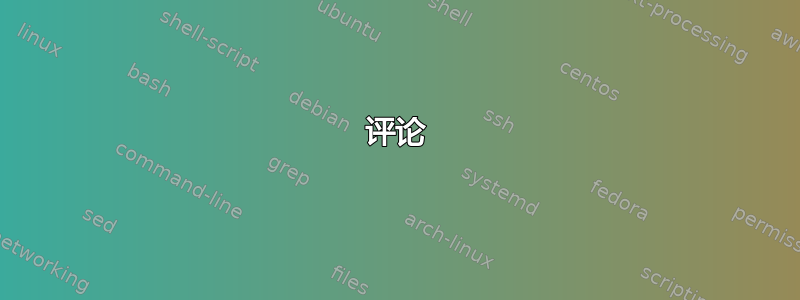
答案1
评论
我用过 Ti钾Z 代表此解决方案。我为顶点创建了一个样式,以避免重新输入。图形在 x 方向上移动,而不是指定移动的坐标。边界框需要手动调整,因为贝塞尔曲线的控制点超出了可见绘图的限制。
执行
\documentclass[tikz]{standalone}
\usetikzlibrary{calc}
\tikzset{
vertex/.style = {
circle,
fill=black,
outer sep=2pt,
inner sep=1pt
}
}
\begin{document}
\begin{tikzpicture}[>=stealth]
% We need to adjust the bounding box manually
% as the control points enlarge it.
\path[use as bounding box] (-1.5,-0.5) rectangle (10.5,5);
\begin{scope}[xshift=0cm]
\coordinate (o) at (0,0);
\node[below] at (o) {root};
\draw node[vertex] (a) at (0,3) {};
\draw node[vertex] (b) at (0,4) {};
\node[above] at (b) {$v$};
\draw[->] (0,0) -- (a) (a) -- (b);
\draw[blue,->] (b) .. controls (-1,4.5) .. node[below right] {$e_1$} (0,2);
\draw[blue,->] (b) .. controls (1,4.5) and (-3,7) .. node[below right] {$e_2$} (0,1);
\end{scope}
\begin{scope}[xshift=3cm]
\coordinate (o) at (0,0);
\node[below] at (o) {root};
\draw node[vertex] (a) at (0,3) {};
\draw node[vertex] (b) at (0,4) {};
\node[above] at (b) {$v$};
\draw[->] (0,0) -- (a) (a) -- (b);
\draw[blue,->] (b) .. controls (-1,4.5) .. node[below right] {$e_1$} (0,1);
\draw[red,->] (b) .. controls (1,4.5) .. node[below left] {$e_2$} (0,2);
\end{scope}
\begin{scope}[xshift=6cm]
\coordinate (o) at (0,0);
\node[below] at (o) {root};
\draw node[vertex] (a) at (0,3) {};
\draw node[vertex] (b) at (0,4) {};
\node[above] at (b) {$v$};
\draw[->] (0,0) -- (a) (a) -- (b);
\draw[blue,->] (b) .. controls (-1,4.5) .. node[below right] {$e_1$} (0,2);
\draw[red,->] (b) .. controls (1,4.5) .. node[below left] {$e_2$} (0,1);
\end{scope}
\begin{scope}[xshift=9cm]
\coordinate (o) at (0,0);
\node[below] at (o) {root};
\draw node[vertex] (a) at (0,3) {};
\draw node[vertex] (b) at (0,4) {};
\node[above] at (b) {$v$};
\draw[->] (0,0) -- (a) (a) -- (b);
\draw[red,->] (b) .. controls (1,4.5) .. node[below left] {$e_1$} (0,2);
\draw[red,->] (b) .. controls (-1,4.5) and (3,7) .. node[below left] {$e_2$} (0,1);
\end{scope}
\end{tikzpicture}
\begin{tikzpicture}[>=stealth]
% We need to adjust the bounding box manually
% as the control points enlarge it.
\path[use as bounding box] (-1,-0.5) rectangle (1.5,5.5);
\coordinate (o) at (0,0);
\node[below] at (o) {root};
\draw node[vertex] (a) at (0,1) {};
\draw node[vertex] (b) at (0,2) {};
\draw node[vertex] (c) at (0,3) {};
\draw node[vertex] (d) at (0,4) {};
\node[above] at (d) {$v$};
\draw (d) node[left] {$e_1$} -- (-0.5,4.5);
\filldraw[draw=blue,fill=blue!50]
(-0.5,4.5) .. controls (-1,5) and (-0.75,4.5) .. ($(c)+(180:4pt)$)
arc[start angle=180, end angle=270, radius=4pt]
-- ($(b)+(90:4pt)$) .. controls (-1,5) .. (-0.5,4.5);
\draw (d) node[right] {$e_2$} -- (0.5,4.5);
\filldraw[draw=red,fill=red!50]
(0.5,4.5) .. controls (1,5) and (0.75,4.5) .. ($(c)+(0:4pt)$)
arc[start angle=0, end angle=-90, radius=4pt]
-- ($(b)+(90:4pt)$) arc[start angle=90, end angle=0, radius=4pt]
($(b)+(0:4pt)$) .. controls (1,5) .. (0.5,4.5);
\draw[red,thick,->] (0.5,4.5) .. controls (1,5) .. ($(b)+(0:4pt)$);
\draw[->] (-0.5,4.5) .. controls (-1,5) and (3,7) .. (a);
\draw[->] (o) -- (a) (a) -- (b) (b) -- (c) (c) -- node[left] {$e$} (d);
\end{tikzpicture}
\end{document}






